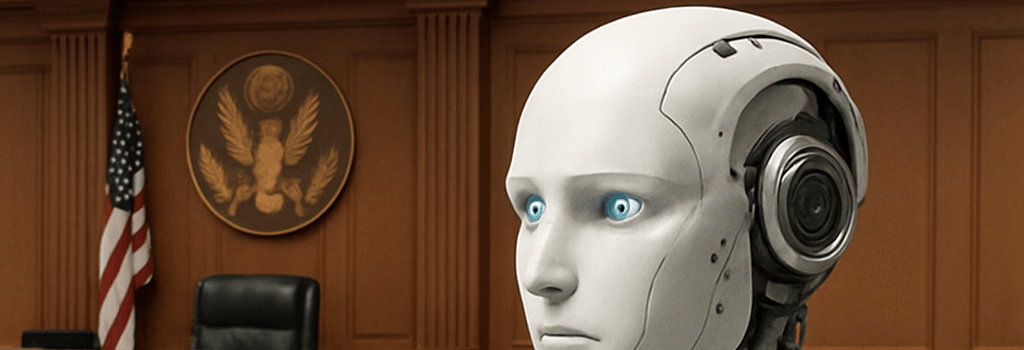US courts may overlook AI errors, expert warns

Background: A Hallucinated Order
The recent vacatur of a Georgia appellate order has thrust into the spotlight the risks posed by AI hallucinations in judiciary workflows. In July 2025, the Georgia Court of Appeals vacated a divorce decree after discovering that counsel relied on fabricated case citations—likely generated by large language models (LLMs)—to support a proposed judicial order.
Case Study: Georgia Divorce Dispute
In the Georgia dispute, the husband’s attorney submitted a proposed order drafted by Diana Lynch. Overburdened trial judges often accept such drafts, but this order cited two entirely fictitious cases along with two irrelevant precedents. On appeal, the three-judge panel, led by Judge Jeff Watkins, imposed $2,500 in sanctions and remanded the case, warning that unvetted AI outputs threaten the integrity of legal rulings.
Key Findings
- Two “hallucinated” cases and additional irrelevant citations slipped through initial review.
- Counsel’s appellate brief added 11 more bogus or inapplicable cases, compounding the error.
- Judge Watkins could not conclusively determine if the fabrications were AI-generated or maliciously inserted.
Technical Anatomy of AI Hallucinations in Legal Contexts
LLMs such as GPT-4 and open-source models (e.g., Llama 2, Falcon) use transformer architectures with multi-head attention mechanisms and token embeddings. While they excel at generating fluent text, their statistical sampling can produce hallucinations—fabricated entities or references not grounded in training data.
- Training Data Gaps: Legal corpora are proprietary and inconsistently digitized, causing LLMs to interpolate missing case names.
- Sampling Algorithms: Temperature settings above 0.7 increase creativity but also hallucination rates, sometimes exceeding 5% for obscure queries.
- Context Window Limits: GPT-4’s 32K-token context window may omit earlier legal citations, leading the model to invent precedents when the vector store lacks matches.
Emerging Detection and Verification Tools
To counteract hallucinations, researchers and startups are developing citation-verification pipelines:
- Vector Search Integration: Embedding-based retrieval systems (e.g., Pinecone, Elastic Vector Search) cross-check LLM output against a centralized case law corpus.
- API-Based Fact-Checking: Services like Casetext’s CoCounsel or Westlaw Edge expose RESTful endpoints to validate case metadata in real time.
- Open-Source Validators: The POLARIS Lab’s prototype tool uses fuzzy matching and n-gram similarity thresholds to flag non-existent citations with >85% precision.
Policy and Regulatory Responses
Only a handful of jurisdictions have instituted formal AI guidelines for courts:
- Michigan & West Virginia: Judicial ethics opinions mandating AI technical competence.
- Virginia & Montana: Statutes requiring human oversight for AI in criminal justice algorithms.
- Texas: A newly created Standing Committee on Emerging Technology released an AI Toolkit in Q1 2025, advising judges on vendor selection and disclosure protocols.
California’s Assembly Bill 673, introduced March 2025, would require all state trial courts to deploy AI-detection software by 2027 and to maintain an open repository of case law for public validation.
Expert Perspectives
“It’s frighteningly likely that trial courts with heavy dockets will inadvertently rubber-stamp AI-generated errors,” warns John Browning, former Fifth Court of Appeals justice and law professor at Faulkner University.
“Without robust vector retrieval and API checks, LLMs will continue to fabricate plausible-sounding but non-existent precedents,” adds Peter Henderson of Princeton’s POLARIS Lab.
Integrating AI into Judicial Workflows: Benefits and Risks
Judges are exploring AI to accelerate legal research and draft opinions. Pilot projects using GPT-4 Turbo report up to 30% faster time-to-first-draft, but also highlight risks:
- Bias Propagation: Uneven training data can reproduce historical legal biases, affecting minority litigants.
- Transparency: Proprietary models lack audit logs, making it difficult to trace source documents.
- Ethical Delegation: Overreliance may erode judges’ legal reasoning if code-based justifications substitute for human analysis.
Future Outlook: Toward Centralized Case Law Repositories
Experts advocate for a free, centralized, open-source database of federal and state opinions, similar to Europe’s EUR-Lex, to:
- Enable real-time citation verification via HTTP/REST APIs.
- Support research on AI influence patterns across hundreds of thousands of filings.
- Reduce paywalls that currently fragment legal data providers.
Recommendations for Judges and Courts
- Invest in continuous AI/ML training programs for judicial officers.
- Adopt standardized AI-disclosure mandates in filings, specifying model name, version, and prompt templates.
- Explore innovative solutions like bounty systems that reward detection of fabricated citations.
Until a unified regulation emerges, vigilance and education remain the strongest defenses against the creeping threat of AI hallucinations in the courtroom.